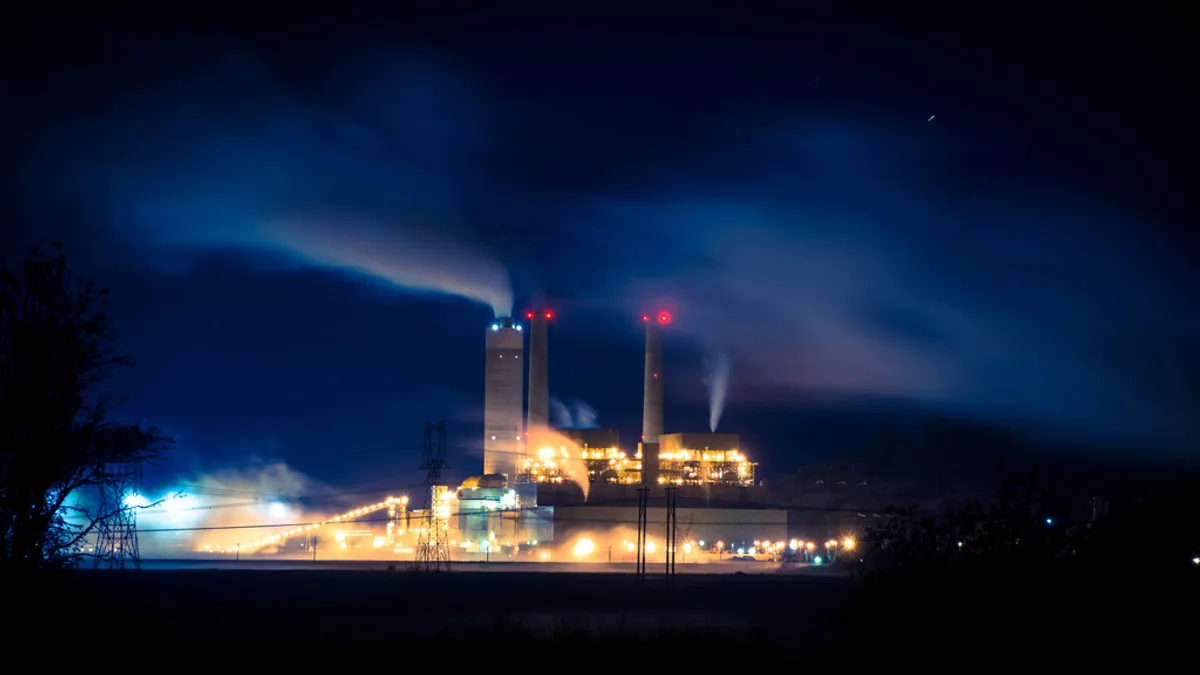Dive Brief:
- Two separate carbon control bills have landed in the Oregon state legislature at the same time, the Oregonian reports, each designed to help the state reach ambitious climate goals that at the moment may be out of reach.
- Oregon in 2007 set a goal of reducing carbon emissions 75% by 2050, relative to 1990 levels. But critics say work towards the goal has been uneven, and they want to change the law to include enforceable targets.
- One rule, the Clean Electricity and Coal Transition Plan, would add more renewables and phase out dirtier sources; the Healthy Climate Act would set hard caps on emissions and a market-like structure for allowances.
Dive Insight:
Two bills representing different approaches to Oregon's carbon goals are up for debate in the legislature, and it seems some action will be taken quickly. The Oregonian reported that earlier this month in a joint session of energy committees, Sen. Chris Edwards (D), a sponsor of the carbon market bill, said that if the bill is approved in February it would set in motion legislative wheels to have the program running by 2020.
"If we don't take it up by 2020, the possibility or likelihood of hitting (state climate) goals is very unlikely," he said, according to The Oregonian. "We already know we're not going to hit the 2020 goals."
The proposed Healthy Climate Act would set hard limits on emissions, beginning with a 20% reduction by 2025, 45% by 2035, and finally the state goal of 75% by 2050. Any facility that emits more than 25,000 metric tons of CO2 would be required to purchase allowances, and those tradable allowances would decrease over time (and increase in price).
Another proposal, the Clean Electricity and Coal Transition Plan, would eliminate coal power in the state within 20 years and require utilities get half of their power mix from renewable energy by 2040.
A spokesman for Portland General Electric told the paper that the company prefers the bill to eliminate coal and increase renewables over the one that would set up emissions caps and trading.
"It's a better plan," PGE's Steve Corson said. "We don't see (the Health Climate Act) driving carbon reductions. We see it driving price increases."
Conversely, the Clean Electricity and Coal Transition Plan can be accomplished without major rate hikes, Corson told the Oregonian.
Large industrial consumers, on the other hand, like neither of the proposals.
"There are tens of thousands of jobs at stake here," John Carr, executive director of the Industrial Customers of Northwest Utilities, told The Oregonian. "We're opposed to both bills."
The push for carbon pricing in Oregon comes as a number of states debate the subject as a compliance option under the Clean Power Plan. Since the plan was announced in 2014, a number of states and utilities have floated the option of carbon pricing and emissions trading — either on a national or regional basis — as a cheaper option than individual state compliance plans.
Conversations on carbon pricing are expected to continue throughout 2016 as states mull compliance options. Just last week, E&E publishing reported that discussions of such pricing schemes are underway even in West Virginia, considered some of the most hostile territory in the nation for the EPA regulatory package.















